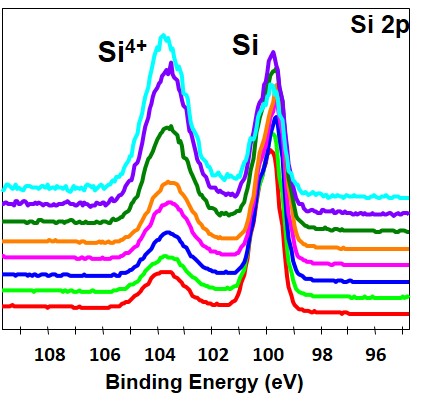
Most commonly in XPS instruments the electron energy analyser is positioned so that most of the detected electrons have originated from the sample surface with a trajectory in line with the surface normal. This is called normal emission, and the electrons are said to have a take-off angle of 90° to the surface.
Under these conditions XPS is the most bulk sensitive it can be for a given X-ray energy, with an information depth generally less than ca. 10 nm. It also tends to give the maximum signal, and the geometry is generally well-understood.
Both our Kratos Axis Ultra-DLD and Thermo k-alpha+ systems are equipped with angle resolved capabilities
Increasing the surface sensitivity
As electrons can only travel a given distance through a material before an interaction resulting in an energy loss occurs (the inelastic mean free path, IMFP of an electron), by varying the angle at which these electrons are detected from the surface, we may enhance the surface contribution – this is termed Angle-resolved XPS, or ARXPS.
Therefore, by changing the tilt of the sample stepwise from 0° to 75°, surface sensitivity can be increased as we are reducing the XPS information depth.
How can ARXPS help? |
Common applications? |
|---|---|
|
|
|
|
|
|

